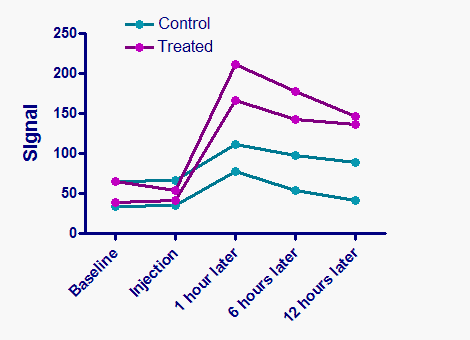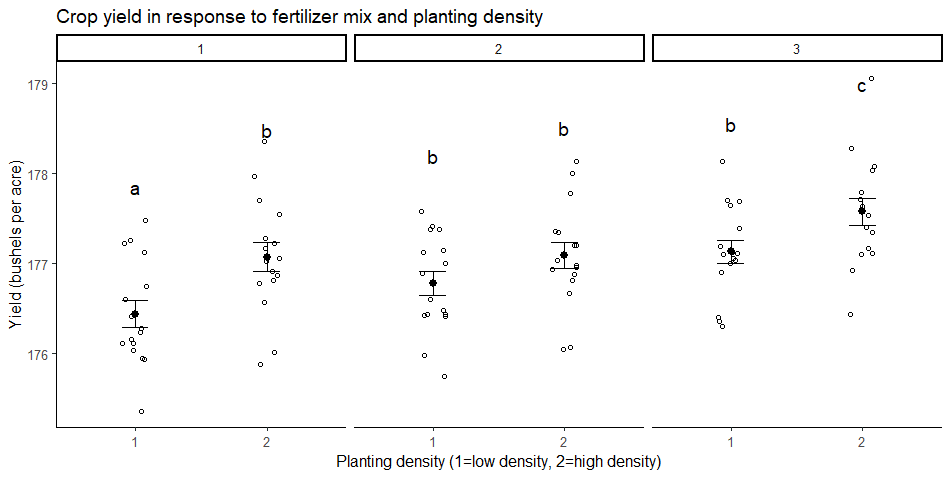

- #How to plot graph of two way anova in excel how to
- #How to plot graph of two way anova in excel plus
The graph on the left below shows no interaction. If the null hypothesis is true, what is the chance of randomly sampling subjects and ending up with as much (or more) interaction than you have observed? If columns represent drugs and rows represent gender, then the null hypothesis is that the differences between the drugs are consistent for men and women. Often the test of interaction is the most important of the three tests. More precisely, the null hypothesis states that any systematic differences between columns are the same for each row and that any systematic differences between rows are the same for each column. The null hypothesis is that there is no interaction between columns (data sets) and rows. Therefore it computes P values that test three null hypotheses (repeated measures two-way ANOVA adds yet another P value).
#How to plot graph of two way anova in excel plus
Two-way ANOVA partitions the overall variance of the outcome variable into three components, plus a residual (or error) term. The F ratios are not very informative by themselves, but are used to determine P values. If the null hypothesis is not true, the F ratio is likely to be greater than 1.0. If the null hypothesis is true, the F ratio is likely to be close to 1.0. Each F ratio is the ratio of the mean-square value for that source of variation to the residual mean square (with repeated-measures ANOVA, the denominator of one F ratio is the mean square for matching rather than residual mean square).

For each component, the table shows sum-of-squares, degrees of freedom, mean square, and the F ratio. Most scientists will skip these results, which are not especially informative unless you have studied statistics in depth. The ANOVA table shows how the sum of squares is partitioned into the four components. Variation among replicates not related to systematic differences between rows and columns.

These are differences between rows that are not the same at each column, equivalent to variation between columns that is not the same at each row. The ANOVA table breaks down the overall variability between measurements (expressed as the sum of squares) into four components: Others call these values eta squared or the correlation ratio. These values (% of total variation) are called standard omega squared by Sheskin (equations 27.51 - 27.53, and R 2 by Maxwell and Delaney (page 295). The remainder of the variation is among replicates (also called residual variation). Prism tabulates the percentage of the variability due to interaction between the row and column factor, the percentage due to the row factor, and the percentage due to the column factor. Two-way ANOVA divides the total variability among values into four components. For example, you might measure a response to three different drugs in both men and women.
#How to plot graph of two way anova in excel how to
If anyone can help explain what I did wrong and how to make the table I would greatly appreciate it.Two-way ANOVA determines how a response is affected by two factors. Is there any package that I can use to help me? I have tried following examples online, but none of them have helped me with the getting the interaction plot to be created, and I have not seen any good examples (even on this site) on how to make a table of mean, SD, and n for Two-way ANOVA that have worked for my situation. How do I make Genotype and Sex an object? Shouldn't they already be objects as they show up in the ANOVA table?Īlso, I want to make a table of the Mean,SD, and n for each cell, but when I tried to do so using what worked for a one-way ANOVA it did not work for Two-way. "Genotype" ,ylab = "Enzyme Activity (enzyme unit (U)=1µmol min-īut, when I do so I get this error: Error in tapply(response, list(x.factor, trace.factor), fun) : object 'Genotype' not found Next, I tried to make an interaction plot: ot(Genotype,Sex,Activity, fun = mean, type= c("b"), xlab= Then to do my ANOVA I did: Model_1 summary(Model_1) I checked my data and it was all under the three headers in three columns. I then in RStudio went File>Import Dataset>Excel>Selected my dataset file>Selected First Row As Names & Open Data Viewer. I am having a coding issue when trying to create an interaction plot of fixed-effects(Model 1) Two-Way ANOVA data.I typed and imported my data from excel into RStudio.


 0 kommentar(er)
0 kommentar(er)
